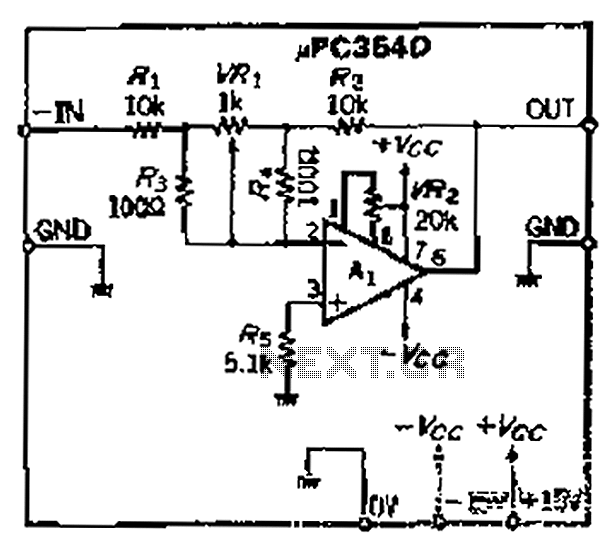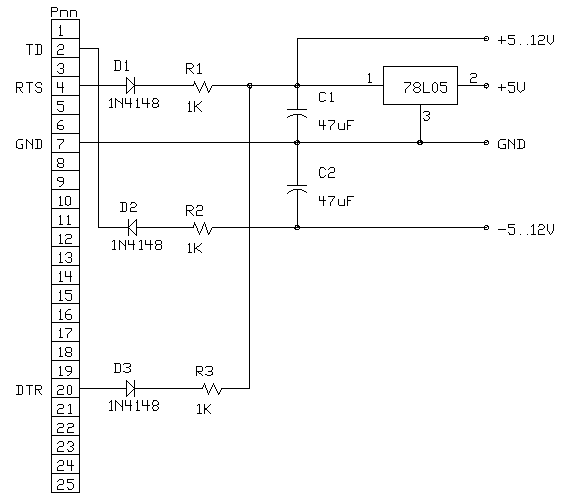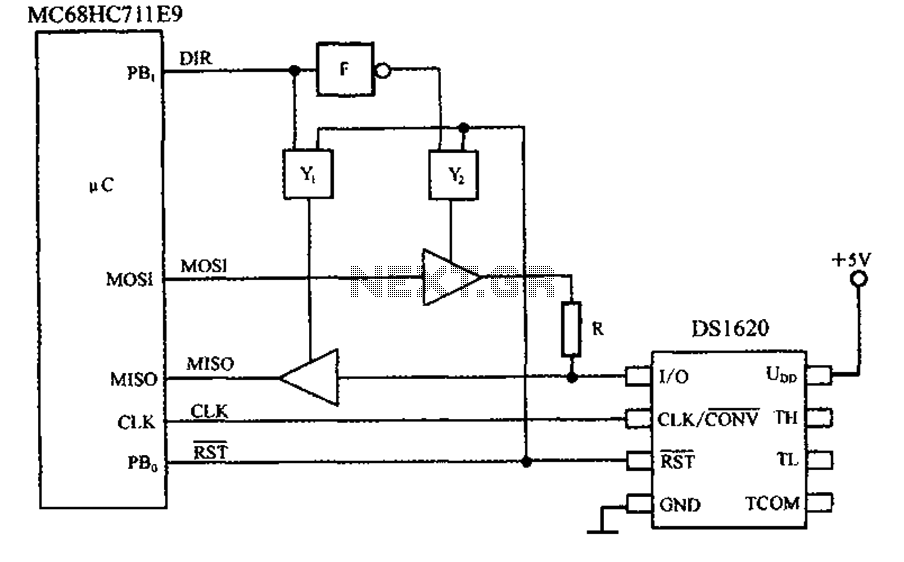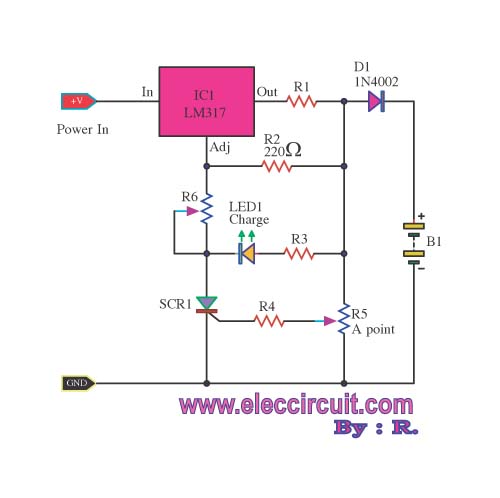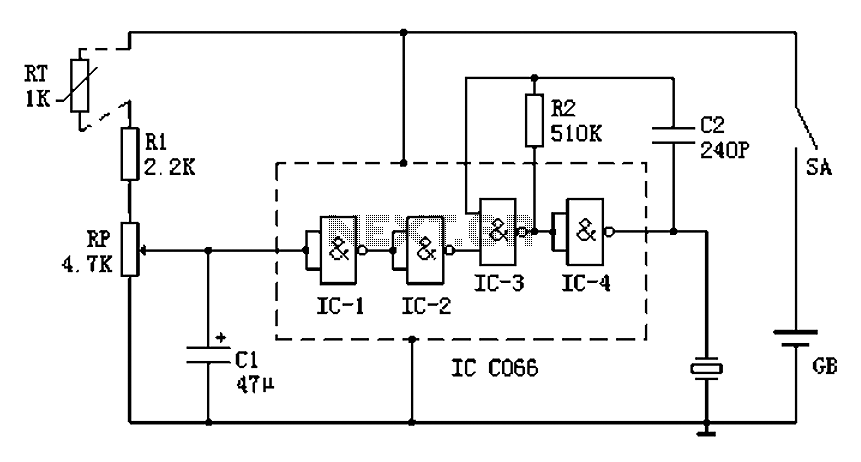
Multi power failure alarm circuit
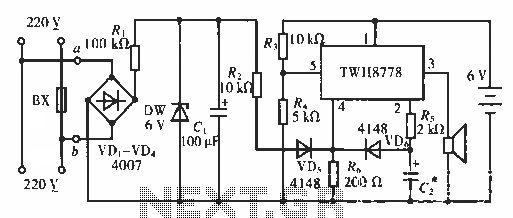
The circuit functions as an AC blown fuse alarm. When the fuse (BX) is intact, 220 V AC voltage passes through a bridge rectifier composed of diodes VD1 to VD4. Resistor R1 limits the current, and the output is converted to 6 V DC by the voltage regulator. Capacitor C1 acts as a filter, while R2 and diode VD5 are used to isolate the circuit's action. The power switch IC TWH8778 is connected to the circuit, with pin 4 controlling the high power level. If the TWH8778 is off, the circuit does not operate, and the speaker remains silent.
The AC blown fuse alarm circuit is designed to monitor the status of a fuse (BX) in an AC power supply system. When the fuse is intact, the circuit allows 220 V AC voltage to flow through a bridge rectifier made up of diodes VD1, VD2, VD3, and VD4. This rectification process converts the AC voltage to a pulsating DC voltage. Resistor R1 serves to limit the current entering the rectifier, protecting the circuit from potential overcurrent conditions.
Following the rectification stage, the output is fed into a voltage regulator that steps down the voltage to a stable 6 V DC. This regulated voltage is essential for powering the subsequent components in the circuit. Capacitor C1 functions as a filter, smoothing out any voltage ripples that may occur after rectification, ensuring that the voltage supplied to the rest of the circuit is steady and reliable.
Diode VD5 is implemented to isolate certain actions within the circuit, preventing interference from other components. The power switch IC TWH8778 is a critical element of the design, with pin 4 specifically designated for controlling the high power level of the circuit. When the fuse (BX) blows, the power switch IC TWH8778 is turned off, ceasing operations of the circuit. As a result, the speaker, which is intended to provide an audible alarm, remains silent, indicating that the fuse has failed.
This circuit can be utilized in various applications where monitoring of fuse integrity is necessary, providing an effective means of alerting users to potential electrical issues before they escalate. Proper implementation of components and careful consideration of voltage levels and current ratings are crucial to ensure the reliability and longevity of the circuit.Circuit works: This is an AC blown fuse alarm. When BX is not when blown, 220 V AC voltage through a VD1 VD4 bridge rectifier, R1 limiting buck, after DW 6V DC voltage regulator, C1 filter formed by R2, VD5 (isolated from the action) is applied to the power switch IC TWH8778 4 feet, 4 feet high power level, TWH8778 off does not work, the speaker does not sound.
The AC blown fuse alarm circuit is designed to monitor the status of a fuse (BX) in an AC power supply system. When the fuse is intact, the circuit allows 220 V AC voltage to flow through a bridge rectifier made up of diodes VD1, VD2, VD3, and VD4. This rectification process converts the AC voltage to a pulsating DC voltage. Resistor R1 serves to limit the current entering the rectifier, protecting the circuit from potential overcurrent conditions.
Following the rectification stage, the output is fed into a voltage regulator that steps down the voltage to a stable 6 V DC. This regulated voltage is essential for powering the subsequent components in the circuit. Capacitor C1 functions as a filter, smoothing out any voltage ripples that may occur after rectification, ensuring that the voltage supplied to the rest of the circuit is steady and reliable.
Diode VD5 is implemented to isolate certain actions within the circuit, preventing interference from other components. The power switch IC TWH8778 is a critical element of the design, with pin 4 specifically designated for controlling the high power level of the circuit. When the fuse (BX) blows, the power switch IC TWH8778 is turned off, ceasing operations of the circuit. As a result, the speaker, which is intended to provide an audible alarm, remains silent, indicating that the fuse has failed.
This circuit can be utilized in various applications where monitoring of fuse integrity is necessary, providing an effective means of alerting users to potential electrical issues before they escalate. Proper implementation of components and careful consideration of voltage levels and current ratings are crucial to ensure the reliability and longevity of the circuit.Circuit works: This is an AC blown fuse alarm. When BX is not when blown, 220 V AC voltage through a VD1 VD4 bridge rectifier, R1 limiting buck, after DW 6V DC voltage regulator, C1 filter formed by R2, VD5 (isolated from the action) is applied to the power switch IC TWH8778 4 feet, 4 feet high power level, TWH8778 off does not work, the speaker does not sound.
